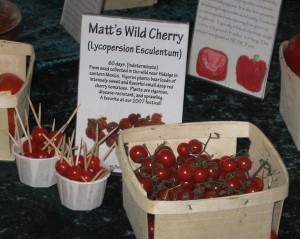Choosing tomatoes to plant in your garden can be a bit tricky if you don’t know a few key terms. Since there are so many different tomato varieties out there, it can be hard to figure out which one is right for your garden. Some varieties are perfect for making sauce, while others are great for tossing into salads all summer long.
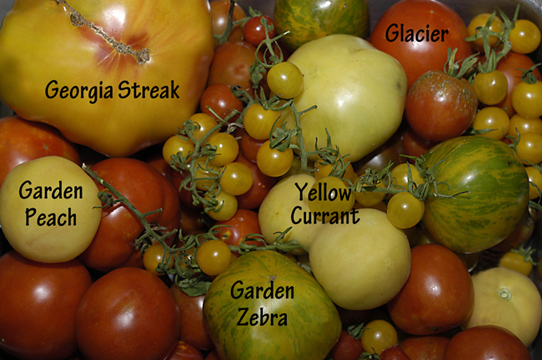
All of the tomato seeds Southern Exposure offers are non-GMO and non-hybrid. Most varieties are heirloom tomato seeds. People often debate about what “heirloom” means, but to us, an heirloom variety is generally one that was introduced before the widespread use of hybrid varieties in industrial agriculture. This began around 1940. The integrity of our heirloom tomato seeds has been preserved thanks to open pollination. Most of our tomato seeds are also certified organic, which means the seed was collected from plants grown without exposure to petrol chemicals.
Determinate vs. Indeterminate Tomatoes
The distinction between determinate and indeterminate tomatoes sometimes leaves people baffled, so here’s a little tutorial.
Determinate tomatoes will stop growing at a certain point, and generally they are shorter in height than indeterminate varieties. Here in Virginia, if a determinate tomato plant grows to be five feet tall, the same plant could be three feet tall in a colder climate. Either way, there is a limit to how tall a determinate tomato plant will get.
Determinate tomatoes include: Glacier, Roma VF Virginia Select, Marglobe VF, Neptune
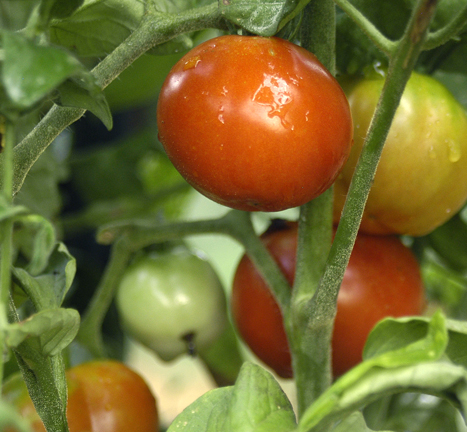
Indeterminate tomatoes, on the other hand, will just keep growing and growing! Factors that affect height are climate/length of season, trellis size, and plant health. In tropical areas, indeterminate varieties can be like perennials and grow for a few years. Most tomato varieties, especially cherries, are indeterminate. One of our customers who planted our Matt’s Wild Cherry seeds in her greenhouse told us that the vine grew to be 17 feet long! (Please keep in mind that this is very unusual.)
Indeterminate tomatoes include: Yellow Brandywine, Georgia Streak, Abraham Lincoln

An advantage of growing determinate tomatoes is that there is less trellising work involved. Also, if you are going to be canning fresh tomatoes, you will probably want to go with a determinate variety as most of the fruit will need to be harvested over a short period of time. The disadvantage of determinate tomatoes is that they have fewer leaves than indeterminate varieties, meaning that the plant is less likely to receive nutrients. More leaves = more nutrients = tastier fruit. So, if you are hoping for a tomato plant that will consistently bear smaller amounts of tomatoes for snacking, sandwiches and salads, you’ll want to go with an indeterminate variety.
Cage-free Tomatoes?
We’ve been asked if it’s absolutely necessary to trellis tomatoes. In other words, is it OK to let them sprawl on the ground? The short answer is yes. But it’s not the greatest idea! Cage-less tomatoes will bear less fruit than trellised tomatoes, and the fruit you will get
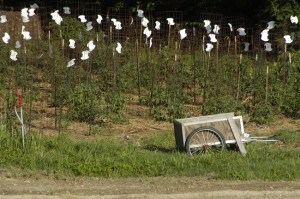
could be more vulnerable to rot and critters. If you really don’t have the funds for trellising materials, make sure to mulch the ground heavily to protect the tomatoes. If the mulch
gets wet, however, the ripe tomatoes sitting on the ground will certainly rot, so I’d recommend only trying cage-free tomatoes in hot, dry weather.
Although tomato trellising requires both time and money, it’s a worthy investment! You can reuse your tomato cages year after year. At Southern
Exposure, we use five-foot-tall cages made with concrete-reinforced wire cut into pieces that measure two to three feet in diameter. Also, we make sure to secure our cages with sturdy posts so that they don’t fall over.
Husk Tomatoes
Thanks to some of our seed growers just up the road, we now carry fives types of tomatillos! Our most recent addition is called Purple Tomatillo. In honor of this, I’d like to briefly explore the world of husk tomatoes with you.
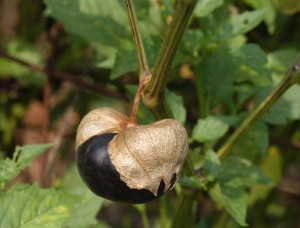
Husk tomatoes, as our catalog describes, “are distinguished from tomatoes by the light-brown, papery husk which enlarges and covers the maturing berries.” Picture Chinese lanterns with goodies inside of them, and you’ve got husk tomatoes!
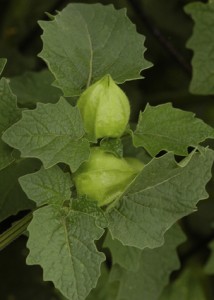
Ground cherries and tomatillos are the two most commonly cultivated species of husk tomatoes. Tomatillos are commonly used for salsa and other Mexican foods, and they are often cooked to bring out their full flavor. Ground cherries, on the other hand, can be eaten raw. They are deliciously sweet, so you could also try them in sauces, preserves, pies and other desserts!
Lastly, Some All-Time Favorites!
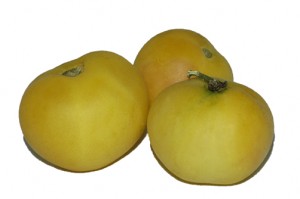
For storage – Garden Peach*
For sauce – Hungarian Italian Paste
Cherry tomatoes – Matt’s Wild Cherry
All-around good – Eva Purple Ball
*Personally, I’d say that Garden Peach is the most scrumptious tomato I’ve ever tasted. These little pinkish-yellow bulbs make the perfect snack, and if you pick them when light green, they’ll store well without splitting.
